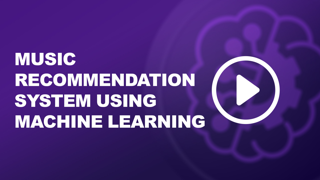Heart Disease Prediction Using Logistic Regression in Machine Learning
Heart Disease Prediction Using Logistic Regression
In this video, we will explore how to predict heart disease using Logistic Regression, a popular machine learning algorithm. This tutorial is perfect for students, professionals, or anyone interested in data science, machine learning, and healthcare analytics.
Why Learn About Heart Disease Prediction Using Logistic Regression?
Understanding how to predict heart disease using Logistic Regression helps to:
- Develop practical machine learning skills.
- Apply data science techniques to real-world healthcare problems.
- Enhance your ability to build predictive models and analyze medical data.
Key Concepts
1. Logistic Regression:
- A statistical method used for binary classification that estimates the probability that a given input belongs to a particular category.
2. Machine Learning:
- A field of artificial intelligence that uses algorithms and statistical models to enable computers to learn from and make predictions based on data.
3. Healthcare Analytics:
- The use of data analysis tools and techniques to gain insights into healthcare data, helping to improve patient outcomes and operational efficiency.
Steps to Predict Heart Disease Using Logistic Regression
1. Data Collection:
- Gather a dataset that includes various features related to heart health, such as age, gender, blood pressure, cholesterol levels, and more.
2. Data Preprocessing:
- Clean the data to handle missing values, normalize numerical features, and encode categorical variables.
3. Feature Selection:
- Identify and select the most relevant features that contribute to predicting heart disease.
4. Splitting the Dataset:
- Divide the dataset into training and testing sets to evaluate the performance of the model.
5. Training the Model:
- Use the training set to train a Logistic Regression model, fitting the model to the data.
6. Evaluating the Model:
- Assess the model's performance on the testing set using metrics such as accuracy, precision, recall, and the ROC curve.
7. Making Predictions:
- Use the trained model to predict the likelihood of heart disease in new or unseen data.
Practical Applications
Healthcare Prediction Models:
- Use these techniques to develop predictive models for various healthcare conditions, helping to improve early diagnosis and treatment.
Data Science Projects:
- Enhance your data science portfolio by building and evaluating predictive models for healthcare data.
Learning and Teaching:
- Improve your understanding of machine learning algorithms and their applications in healthcare by working on real-world datasets and projects.
Additional Resources
For more detailed information and a comprehensive guide on predicting heart disease using Logistic Regression, check out the full article on GeeksforGeeks: https://www.geeksforgeeks.org/ml-heart-disease-prediction-using-logistic-regression/. This article provides in-depth explanations, examples, and further readings to help you master this topic.
By the end of this video, you’ll have a solid understanding of how to predict heart disease using Logistic Regression, enhancing your data science skills and ability to apply machine learning techniques to healthcare problems.
Read the full article for more details: https://www.geeksforgeeks.org/ml-heart-disease-prediction-using-logistic-regression/.
Thank you for watching!










